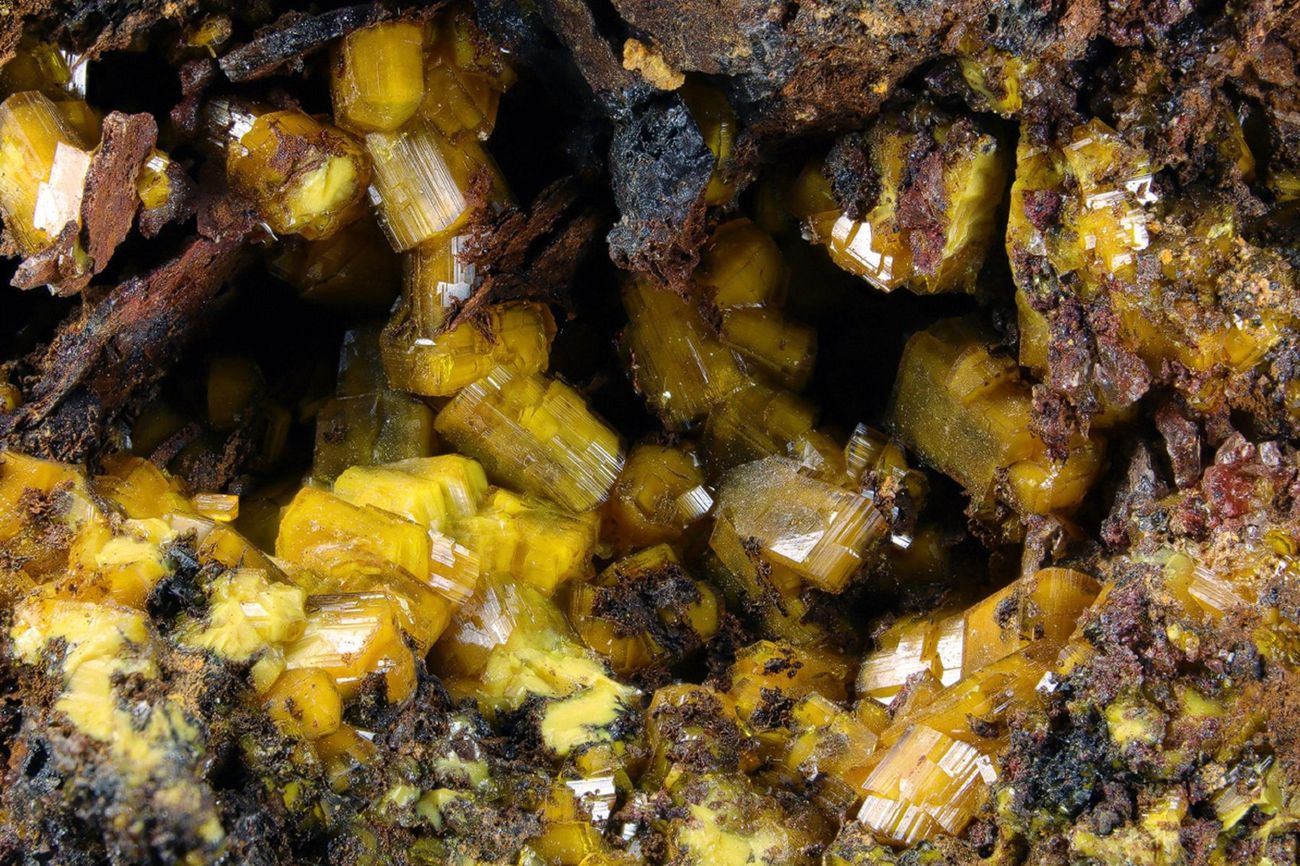
Billietite is a rare mineral that fascinates both scientists and collectors. Named after Belgian geologist Valère Louis Billiet, this mineral has a unique composition and striking appearance. Billietite is a uranium mineral, often found in the oxidized zones of uranium deposits. Its bright yellow color and crystal structure make it stand out among other minerals. But what makes Billietite truly special? Is it the way it forms, its rarity, or perhaps its radioactive properties? In this blog post, we will uncover 30 intriguing facts about Billietite that will shed light on its origins, characteristics, and significance in the world of geology.
Key Takeaways:
- Billietite is a rare, radioactive mineral found in the Democratic Republic of Congo and the United States. It's highly valued by collectors and glows under UV light, making it a unique addition to any mineral collection.
- Due to its rarity and radioactive nature, Billietite is a prized mineral for collectors and scientists. It requires special handling and storage, and can fetch high prices in the market.
What is Billietite?
Billietite is a rare mineral that fascinates both scientists and collectors. Named after Belgian mineralogist Valère Louis Billiet, this mineral has unique properties and an interesting history. Let's dive into some intriguing facts about Billietite.
Origins and Discovery
Understanding where and how Billietite was discovered can give us insight into its rarity and significance.
-
Billietite was first discovered in the Democratic Republic of Congo. This mineral was found in the Shinkolobwe mine, a site known for its rich deposits of uranium minerals.
-
Named after Valère Louis Billiet, a Belgian mineralogist. Billiet made significant contributions to the study of minerals, and this rare find was named in his honor.
-
Discovered in 1937. The mineral was identified during the early 20th century, a period marked by numerous geological discoveries.
-
Found in uranium-rich environments. Billietite typically occurs in areas with high concentrations of uranium, making it a secondary uranium mineral.
Physical and Chemical Properties
Billietite's unique properties make it stand out among other minerals. Here are some key characteristics.
-
Billietite is a barium uranyl oxide hydrate. Its chemical formula is Ba(UO2)6O4(OH)6·8H2O, indicating its complex composition.
-
Yellow to orange-yellow color. This mineral's vibrant hues make it visually striking and easily recognizable.
-
Crystallizes in the orthorhombic system. Billietite forms in a specific crystal structure, which contributes to its unique appearance.
-
Hardness of 2.5 on the Mohs scale. This relatively low hardness means Billietite is quite soft and can be scratched easily.
-
Transparent to translucent. Depending on the sample, Billietite can range from clear to slightly opaque.
Occurrence and Locations
Billietite is not just found anywhere. Its occurrence is limited to specific regions and conditions.
-
Primarily found in the Shinkolobwe mine. This Congolese mine is the most notable source of Billietite.
-
Also found in the United States. Small quantities have been discovered in uranium mines in Utah and Arizona.
-
Occurs in oxidized zones of uranium deposits. Billietite forms in areas where uranium minerals have undergone oxidation.
-
Associated with other uranium minerals. Often found alongside minerals like uraninite and schoepite.
Uses and Applications
While not widely used, Billietite has some specific applications and significance.
-
Primarily a collector's mineral. Due to its rarity and unique properties, Billietite is highly sought after by mineral collectors.
-
Studied for its uranium content. Scientists study Billietite to understand uranium deposits and their formation.
-
Used in geological research. Helps geologists learn more about the environments where uranium minerals form.
Safety and Handling
Handling minerals like Billietite requires caution due to their radioactive nature.
-
Billietite is radioactive. Contains uranium, making it a source of radiation.
-
Requires proper storage. Should be stored in lead-lined containers to shield from radiation.
-
Handling with care. Use gloves and avoid inhaling dust when handling Billietite.
-
Not suitable for jewelry. Due to its radioactivity and softness, Billietite is not used in jewelry making.
Interesting Tidbits
Here are some lesser-known facts that add to the allure of Billietite.
-
Rarely forms large crystals. Most Billietite samples are small, adding to their rarity.
-
Fluorescent under UV light. Glows under ultraviolet light, making it a favorite among collectors who enjoy fluorescent minerals.
-
Named in 1947. Although discovered in 1937, it was officially named a decade later.
-
Part of the uranyl oxide minerals group. Belongs to a group of minerals that share similar chemical compositions.
-
Can alter to other minerals. Over time, Billietite can change into other uranium minerals through natural processes.
Collecting and Value
For those interested in collecting, understanding the value and rarity of Billietite is essential.
-
Highly valued by collectors. Its rarity and unique properties make it a prized addition to any mineral collection.
-
Specimens can be expensive. Due to its scarcity, high-quality Billietite samples can fetch high prices.
-
Often found in museums. Many natural history museums have Billietite specimens on display.
-
Requires special permits for collection. Due to its radioactive nature, collecting Billietite often requires special permissions.
-
Documented in scientific literature. Numerous studies and papers have been published on Billietite, highlighting its significance in the field of mineralogy.
Billietite's Fascinating World
Billietite, a rare uranium mineral, captivates with its unique properties and intriguing history. Found primarily in the Democratic Republic of Congo, this mineral's striking yellow color and crystal structure make it a subject of interest for geologists and collectors alike. Its radioactive nature requires careful handling, but its beauty and rarity continue to draw fascination.
Understanding billietite's formation and characteristics helps appreciate the complexity of Earth's geology. This mineral's presence in uranium-rich deposits highlights the intricate processes that shape our planet. Whether you're a science enthusiast or a casual learner, billietite offers a glimpse into the wonders of mineralogy.
Next time you hear about rare minerals, remember billietite's unique story. Its discovery, properties, and the care required in handling it all contribute to its allure. Dive deeper into the world of minerals, and who knows what other fascinating facts you'll uncover.
Frequently Asked Questions
Was this page helpful?
Our commitment to delivering trustworthy and engaging content is at the heart of what we do. Each fact on our site is contributed by real users like you, bringing a wealth of diverse insights and information. To ensure the highest standards of accuracy and reliability, our dedicated editors meticulously review each submission. This process guarantees that the facts we share are not only fascinating but also credible. Trust in our commitment to quality and authenticity as you explore and learn with us.


